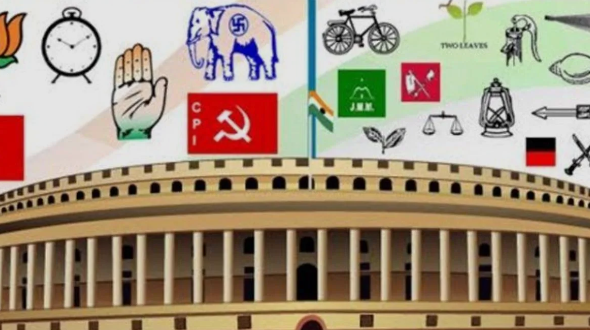India’s General Elections 2024 Put Focus on Electoral Reforms (GS Paper 2, Polity & Governance)

Context:
- Amid India’s General Elections 2024, there’s renewed attention on past electoral reforms, ranging from the establishment of the Election Commission to the introduction of Electronic Voting Machines and recent modifications in the appointment procedure for election commissioners.
- These reforms signify the ongoing evolution and strengthening of India’s electoral system, embodying the spirit of democratic advancement.
Key Electoral Reforms Enacted in India
Establishment of Election Commission:
- Election Commission was founded on 25th January 1950 under Sukumar Sen’s leadership with only a Chief Election Commissioner.
- The inaugural General Election took place from October 1951 to February 1952 with 17.5 crore voters participating.
- Universal suffrage was adopted for citizens above 21 years, despite challenges like an illiterate electorate and refugee populations.
Reduction in Voting Age:
- The 61st Constitutional Amendment Act of 1984 reduced the voting age from 21 years to 18 years for Lok Sabha and assembly elections to enable youth participation in the political process.
Role of Election Commission Personnel:
- In 1985, provision made for personnel engaged in electoral roll preparation to be on deputation to the Election Commission.
Multi-Member Election Commission:
- The Election Commission of India became a Multi-Member Commission in 1989 but reverted to a three-member body in 1993 (one Chief Election Commissioner and two election commissioners).
Introduction of Ballot Papers & Electronic Voting Machines (EVMs):
- Initially, individual colored ballot boxes were used for each candidate.
- The introduction of ballot papers streamlined the voting process, though challenges like potential errors and result delays persisted.
- In 1989, provisions were made for the use of EVMs in elections.
- EVMs were first used experimentally in selected constituencies in 1998 and in the general elections for Goa’s Assembly in 1999.
- EVMs are indigenously designed, developed, and manufactured by Bharat Electronic Ltd. and Electronics Corporation of India Ltd.
Provisions Against Booth Capturing:
- In 1989, provisions were made to counter booth capturing, which includes seizing polling stations, threatening electors, and seizing places used for vote counting.
Model Code of Conduct (MCC):
- Model Code of Conduct (MCC) was originated in Kerala in 1960, and expanded by the ECI in collaboration with political parties by 1979 to curb unfair advantages by the ruling party.
- Electors’ photo identity cards (EPICs) were introduced in 1993 during T.N. Seshan’s tenure as CEC.
Equitable Media Time Allocation:
- A 2003 provision mandates the Election Commission to allocate equitable time on cable television and electronic media during elections.
Ban on Exit Polls:
- A 2009 provision prohibits conducting and publishing exit polls during elections to Lok Sabha and State Legislative Assemblies.
Online Enrollment in Electoral Roll:
- In 2013, provisions were made for online filing of applications for electoral roll enrollment through the Registration of the Electors (Amendment) Rules, 2013.
Introduction of NOTA:
- The Supreme Court directed the inclusion of the None of the Above (NOTA) option in ballot papers and EVMs in 2013, allowing voters to abstain from voting while maintaining ballot secrecy.
Implementation of Voter-Verifiable Paper Audit Trail (VVPAT):
- In 2011, a prototype was developed and demonstrated before the ECI.
- The Central government notified the amended Conduct of Elections Rules, 1961, enabling the use of VVPAT with EVMs in 2013.


